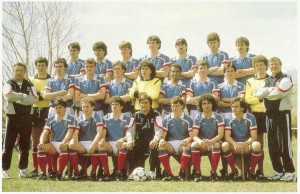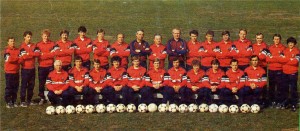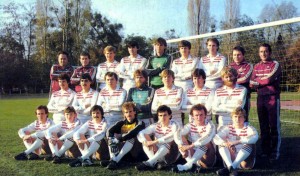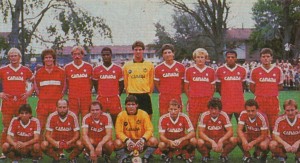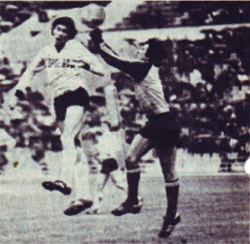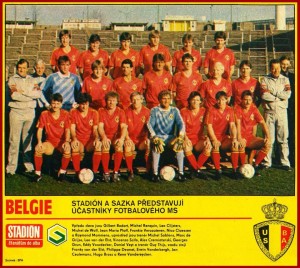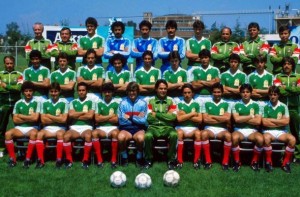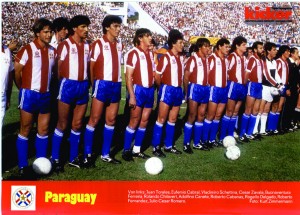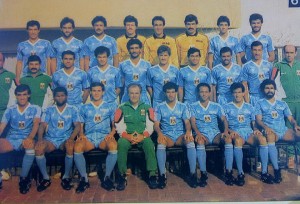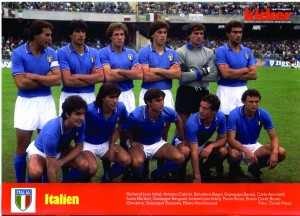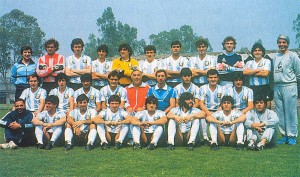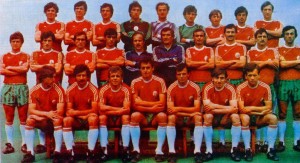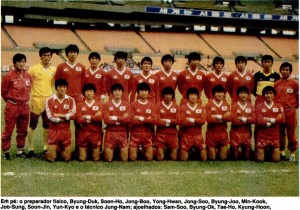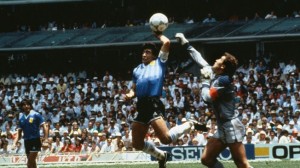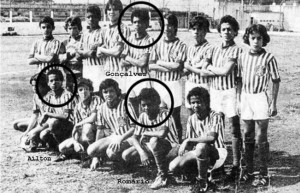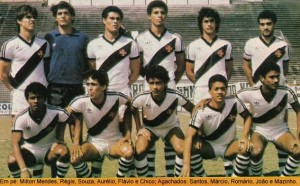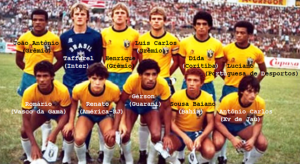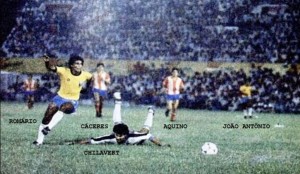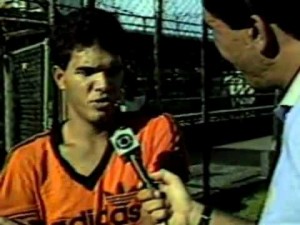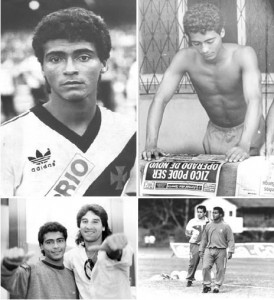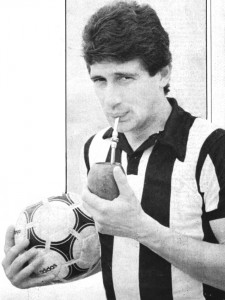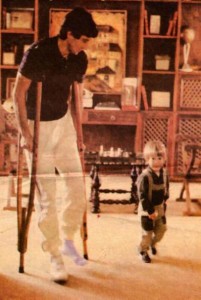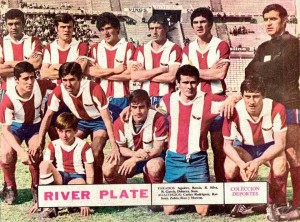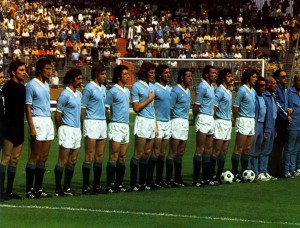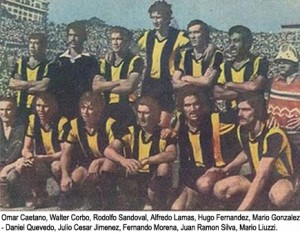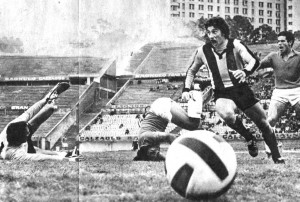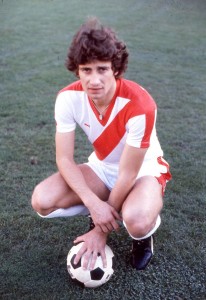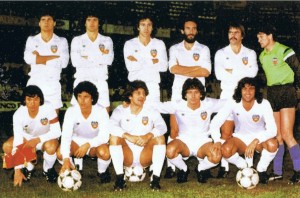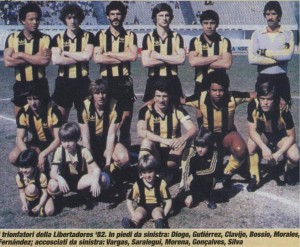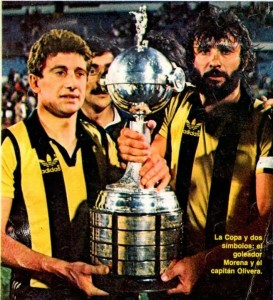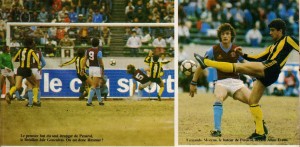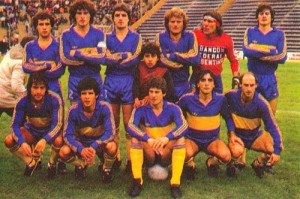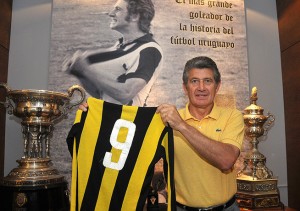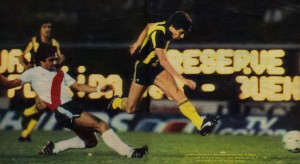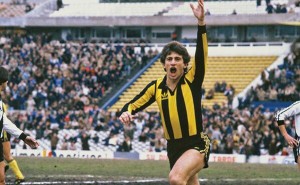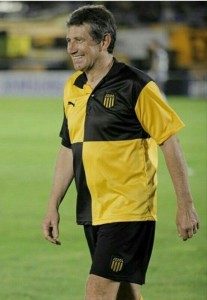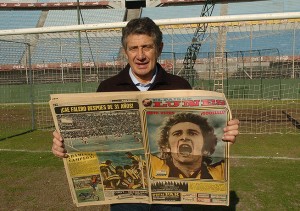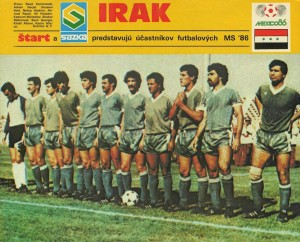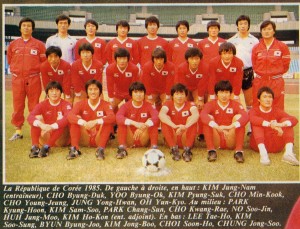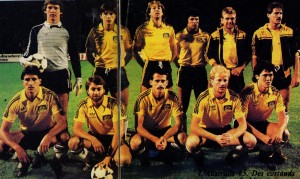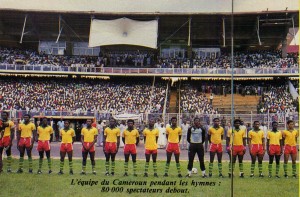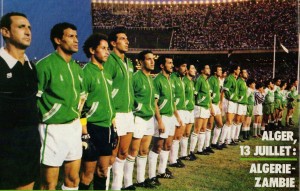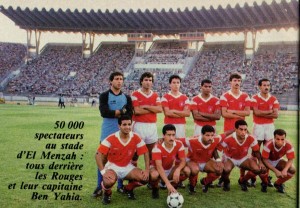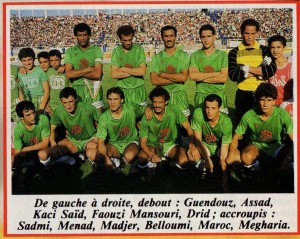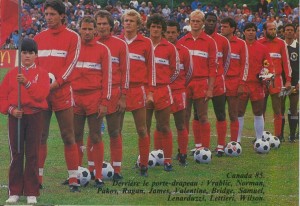On the eve of the 1986 World Cup finals there were more problems and scandals than usually. One has to start from much earlier time – originally, Colombia was chosen to host the finals. But Colombia found itself unable and withdrew. In 1983 FIFA had to chose replacement. This was a problem started after 1974 and gradually getting bigger and bigger – replacement of Argentina was considered in 1978. The country was on the brim of withdrawal and there were also country urging a boycott for political reasons. It was heavily criticized championship – security was somewhat too heavy-handed and almost to the last minute stadiums were not ready. In 1982 Spain was severe criticism for late and insufficient preparedness and many feared that no stadium will be finished for the championship. And now Colombia called it quit. The problems were real: hosting a world cup was more and more expensive and overwhelming operation, stretching painfully almost every country wanting to host the big event – new stadiums had to be build, tourist lodging and attractions had to be organized in sufficient numbers, and security was looming almost as the central problem, because of ever increasing number of visiting fans and dangerously increasing fan violence. Colombia’s withdrawal was related to combination of domestic political problems and lack of enough cash. Replacement was not easy – as bad luck had it, it was American turn to host the finals. There were few countries able to host such an event to begin with and now even fewer candidates – originally, Brazil, USA, and Canada. Then Brazil withdrew and out of the blue Mexico stepped in. And Mexico was chosen, but there was bitter taste – it looked like Mexico was chosen in advance and no matter what USA and Canada would proposed, they were not going to win. Journalists dug a little and quickly discovered suspicious connections between Joao Havelange and some of the key Mexican bidders. The giant satellite TV company ‘Televisa’ was seen as the prime culprit, for it was going to take huge slice of the profits – it was the biggest TV supplier of the Spanish speaking world. Everybody was denying, of course, and nothing was proven, of course, but the sense of injustice, manipulations, scheming, bribing was very strong. Yes, it fitted well with Havelange’s determination to make the World Cup financially successful, generating enormous profits for FIFA. Corporate sponsorship was more than welcome and from this point of view ‘Televisa’ was important element, just like Coca-Cola: bring the game to every home, see the Coca-Cola add, run to get a bottle or two, and watch the second half sipping Coke. Everybody happy, right? FIFA get money from the sponsors for the privilege to peddle their products and money go to poor countries, so the kids there to be able to play football and develop the game further. No objections about that too.
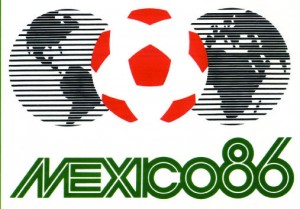
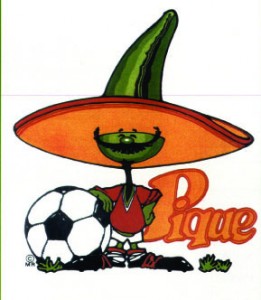
Thus, Mexico became the first country in the world to host World Cup finals a second time. Good for the record book. On more mundane and closer to the game matters, Mexico was the best available choice: USA and Canada had no football infrastructure to speak of and everything had to be build from scratch. Mexico, on the other hand, already had relatively new stadiums, built for the 1970 World Cup and it was more of a case of cosmetic changes and repairs. Time was short, so the Mexican case was the better one. Secondly, this was the only country with developed football culture among the candidates. In 1983 it was plain that football in North America did not capture hearts and NASL was coming to its own bitter end. Both countries had the economic capacity for building new giant stadiums quickly and up to the modern requirements, but it was unlikely to happen, because it could be building useless facilities, a waste of money. Most likely both USA and Canada were going to twist the projects once chosen to host the finals and try to build something different – essentially, a baseball stadium instead of soccer stadium – and because of the time pressure they were going to get their way. Canada presented additional problem – just a few, but far away from each other, large cities. By now, FIFA demanded big tournaments to be played in as many as possible towns and Canada had no more than 4 possible candidates with enormous distances between them. May be even the 1976 Olympics were evoked as argument against: in 1976 most of football games were played on what FIFA did not even consider stadiums: University football fields and such. Canada had its own understanding of ‘spreading the game’ – it was on community level. Give the people a chance to see and then kick the ball a little at the neighbourhood park. It was quite possible Canada to propose some outlandish town as one of the venues, following its own spirit – a city like, say, Regina, which nobody heard of, relatively small and difficult to get to. Such proposition was horrifying for FIFA, wanting grand show and maximum exposure, ‘a big product’ to sell. Mexico had what USA and Canada lacked – football culture, large crowds, stadiums, tourist attractions, more or less enough hotels for accommodating visitors, and police better prepared to deal with fan troubles than USA and Canada, where fan violence was unheard of and supporters of opposing clubs sat peacefully next to each other, sipping beer and making jokes. North American television was unlikely customer too. Frankly, Mexico was the best choice, no matter how crooked the ‘choosing’ was. But that was in 1983.
In 1985 the World Cup was on the brink of collapse again: Mexico was devastated by massive earthquake. This time nature was the enemy, the damage was huge and Mexico was not that rich – looked like the country was forced to abandon the World Cup and use the money for recovery. And if so… there was no time left to get another host. Stadiums take time to build. But Mexico somehow decided to stage the World Cup. Relief. Qualifications were over by the end of 1985 and preparation was the focus in the early months of 1986. Speculations, hopes, criticism, scandals. Plenty of scandals…
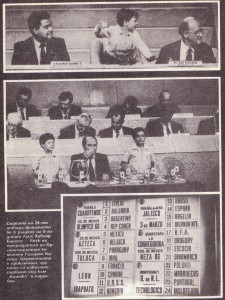
The draw for the finals was perhaps the last happy moment. Everybody somehow got what they wanted – meaning, the usual favourites. On paper, everything looked just fine – Italy, Brazil, West Germany, France, Argentina, England were the favourites, most of them eternal favourites and France – because of what they displayed after 1978. Mexico had an easy group as well – but somehow hosts always get easy group. There were still spots for secondary teams to go ahead, no problem. Yet, never before world cup finals there was so much scandals and criticism of the usual leaders and there was severe doubt that the big football countries had the teams, the coaches, the attitude to play their ‘rightful’ role. Here are some of the big scandals:
Argentina. Menotti was sacked after the poor performance at the 1982 World Cup and Carlos Bilardo was appointed to coach the national team. He was not obvious choice and at first even did not look like he was hired for a long term: it was his recent success with Estudiantes (La Plata) central to his appointment. But the football his team played was disliked and even more disliked was his idea to make the national team play the same kind of football. Once upon a time Bilardo played for the very successful team of Estudiantes, coached by Osvaldo Subeldia, whose credo was ‘realistic football’. That was a concept of iron discipline, absolute following on the chosen tactic, defensive football, looking for opening for lightning counterattack. Ugly and brutal football, which made Estudiantes universally hated. Carlos Bilrado was key defender in this team and one the biggest villains. A team of brutal laborers was Subeldia’s Estudiantes and now Bilardo proclaimed that he will follow the same concept. After the artistic approach of Menotti, this was a huge step back. A step back to some ancient, pre-historic days of the sport. How possibly one can win in 1980s playing a football from the 1960s? Yes, Estudiantes was successful, but they won by 1-0, they were no fun, they spent most of the time kicking the opponents, fighting, arguing with referees. It was no football. That was one side of the problems with Bilardo, leading to bitter irony expressed in ‘El Grafico; just days before the World Cup was about to begin: ‘Bilardo finally managed to divide Argentina in two camps – those, who strongly dislike him, and those who hate him. There were open calls from all sides for his resignation – but he stubbornly did not. A French journalist, watching Argentina vs Colombia, was dismayed by the Argentinian fans – Bilardo was steadily whistled and booed during the whole match, the only moment the fans stopped was in the 24th minute,when Maradona dribbled around 9 Colombian players. That was the public side of the conflict – Bilardo had no friends in the country at all. Dealing with players was the other side – on one hand, Bilardo made clear that he was not going to follow Menotti, therefore, he had no use for players Menotti used. It was entirely different team, centered on Maradona. Two veterans were also included – Daniel Pasarella and Ubaldo Fillol. But it was not even a truce with them – Bilardo clashed with the stars over tactics, over teammates, finally over his making Maradona the team captain. Pasarella eventually bent and remained in the squad, despite the clear fact that he was not to play, but Fillol left the national team. Both were regulars in the qualification campaign, a part of Bilardo’s new team in 1985, but were out just before the World Cup. Fillol’s absence was seen as crucial: he was not only the best Argentine goalkeeper, but he was a regular for so long, there was practically no other keeper with international experience. Out of the blue Bilardo called the barely known Hector Zelada from his Mexican club and this move produced universal outrage: Zelada was 30-years old already and never played for Argentina. He spent most of his career in Mexico, hardly a championship where real stars play. Replacing Fillol with Zelada? Bilardo was out of his mind, surely. Resign, Bilardo! Give us a favour, get out! With you and your jokers we are going to be eliminated in the first round of the World Cup! Hardly ever before a coach faced such universal hostility in Argentina, the mood was dark, and disaster was expected. Outside Argentina opinions were also largely negative – it was shaky Argentina at best, a team with many problems, perhaps the bigger one was making Maradona the center of everything – Maradona’s failure at the 1982 World Cup was not forgotten and there were big doubts he will be better now.
Brazil. After the tragic end of the 1982 World Cup Tele Santana was not sacked, but he changed his approach. No more free improvising and fun – now it was to be careful tactical football, oriented on results only. But it was to be same squad as before. New approach, same players. Who were getting too old – it was repeatedly pointed out to Santana and he only shrugged, saying that age is not important in football. He felt it was his duty to give Zico and Socrates a chance to revenge themselves for 1982. How such free-spirited players were going to play tactical restricted football was unfathomable for fans and specialists. Santana was asking Brazil to play un-Brazilian football, a kind universally despised, and may be his new concept got only one supporter: four years ago Leao, the best Brazilian goalkeeper, refused to play for Santana, because of his undisciplined attacking concept. Defense was weakened in Leao’s view and he was somewhat proven right, for Brazil lost stupidly to Italy. Now it was defensive concept and Leao was back. But others were not and openly rebelled and criticized Santana, which led to their dismissal from the team. Eder was out – officially, for ‘weak legs’. That, for player kicking the ball with 175km per hour! Eder retaliated calling a press-conference with 200 journalists and telling them that Santana will lose his head in Mexico. More fuel for the fier. Renato was out – arguably, the best right winger at the moment. Officially, the reason was egoistic play, which did not serve the needs of the team. Santana dismissed the two best wingers in the country and disaster immediately followed: the last friendly before going to Mexico, against Chile, enraged the Brazilian fans and the team was showered with stones and rotten fruit at the end. ‘An agony and an insult!’ was the verdict of the press. Socrates, Zico, Dirceu, and Oscar were singled out as prime examples of Santana’s lunacy. The lats blow was just before leaving for Mexico – the plain for the team waited idly two hours, because Leandro refused to go at the last minute and Zico and Junior tried to persuade him to change his mind. Still, Leandro refused and immediately called press-conference to give his reasons: ‘Santana wants me to play a winger, but I am central defender. We have a winger – Renato – but Santana does not like him. That is why I don’t want to play for team coached by him.’ True enough… Leandro put his finger in the wound: Santana left out the two best wingers and now had none, so was looking for improvisation. It was stupid, it was a suicide. Best players out, but Zico, not even recovered from heavy injury and plainly out of form, was in… No wonder Santana received death threats and a funeral procession was led in front of his home with his coffin. And an effigy of him was publicly burned. Perhaps never before Brazil was in so dark mood before a world cup, expecting the worst and hoping only for some divine miracle.
West Germany. Usually, the most cruelly criticized team from domestic journalists. This time it was more than ever before – more scandals, more criticism, and also justified criticism, for it was plain fact that West Germany did not have enough classy players. The first scandal started quite early, but never went away: the West German Federation made a revolutionary move after the resignation of Derwall. It was long, iron-clad tradition… so far, West Germany had only 3 coaches, and the old one, after long serving, was replaced by his assistant. But it was not working anymore – partly, because football changed and there was need for somebody with fresher ideas, and partly because there were few really good players and perhaps only some radical change can make more from mediocre material. Franz Beckenbauer was appointed and that was very annoying: it was violation of the sacred – only am educated coach with proper professional license can coach, no exceptions. Beckenbauer had no license and no experience and there was massive professional outcry. It was a scandal not going away even after the Federation tried to compromise – Beckenbauer was not appointed as a coach, but as a ‘director’. Nobody was fooled – against this appointment were people knowing Beckenbauer for years: his former coach in Bayern Udo Lattek and his long-term teammate in the national team Heynckes, now licensed coach. Paul Breitner was merciless as well, although from another angle – now a journalist, but rebellious and iconoclastic as ever, he wrote that Beckenbauer’s team reminds one of old, falling apart, buggy, driven by drunk coachman. It was not far from reality, for the efforts of Beckenbauer to build some decent team at first looked quite clueless – he tried and dismissed Augentaller and Herget, before settling for Magath, who was clearly on downhill, too old, too slow. The efforts to bring Schuster again in the national team failed, but not before escalating into a scandal, this time between players: Schuster plainly said that the West German team is hopeless. His presence or absence would not make any difference. Rummenigge retaliated immediately, accusing Schuster of behaving like spoiled brat. The feud between the two was old, but now was rapidly spreading far and wide – relations in the national team will not be good during the Mexican finals, where Rummenigge will openly accuse ‘the Koln mafia’ of running the show. ‘The Koln mafia’ – Schumacher, Allofs, and Littbarski – had its own problems and grievances. Their problems with ‘the Muhchen mafia’ – Rummenigge and Breitner – in 1982 were not forgotten. Schumacher was particularly outspoken and increasingly feuding with anybody seeing things differently. He just managed to get fired Rinus Michels from 1.FC Koln and now was fighting with chief of the club. In Mexico he severely injured Herget during training match, which was seen as getting rid of him, for Beckenbauer wanted Herget to play libero and Schumacher did not. Beckenbauer used all his diplomatic skills to get a truce with Schumacher until the end of the World Cup – that was, not to give interviews. Schumacher promissed and then broke his promise. As well as his Koln teammates Allofs and Littbarski, who openly protested Beckenbauer’s view that his team has no champion qualities. And then it was almost open war against Rummenigge – not a superstar, in their opinion, but just favourite of Beckenbauer. And the reserve goalie Uli Stein contributed with his own complaints that Beckenbauer favours no-good Schumacher. It was everybody against everybody, never ending war and spat, and sober voices were almost lost in the battle cries. Beckenbauer constantly pointed at the real situation – there were no current German players capable of molding into champion team, that was the reality. Helmut Schon supported his old team captain: ‘the problem of Beckenbauer is that he has not a Beckenbauer in the team.’ Others tried to recall previous campaigns, which were shaky and uncertain at first, but with time the right team eventually shaped just when was needed – no need to attack Beckenbauer too much now. Among scandals and feuds sober realism somewhat prevailed: it was accepted that the current generation is far from great and no matter who coaches and who is in the national team, great expectations would be laughable. At least in West Germany, there were no expectations before the World Cup started, no great hopes, no ambitions. For the first time in years the expectations were modest.
Italy. Reigning world champions, thus, immediately a favourite and in Italy – that was the only concern. Nothing else could do, so the national team was scrutinized and criticized against grand expectations. Bearzot was the prime target – unlike Beckenbauer, Bilardo, and Santana, Bearzot had no problems with players. His team really liked him, the players were loyal to him. He was loyal to them too – it was mutual, but dangerous respect. Bearzot stated just after winning the World title in 1982 that he will use all of his players in 1986, provided they are under 40. Exception will be made for Dino Zoff – he could be at whatever age. Well, in 1982 Bearzot was God himself, but in football gods are transformed into devils incarnate the next day and in Italy – even quicker. The troublesome campaign for the 1984 European championship unleashed heavy criticism against Bearzot. He was accused of stupidly leaving out of the national team some stars, notably Pruzzo and Giordano, and time naturally was against the coach as well, for some of his beloved players retired or got too old, or lost form. By itself, aged players are not seen as something dangerous in Italy – not until they start losing. May be Bearzot made mistakes by not trying to construct younger team, but there was objective problem similar to the one West German faced: currently, there were not enough really talented youngsters. Whatever changes Bearzot did, was with more or less good knowledge that he was getting lesser quality and there was nobody else. He kept veterans as long as he could not just because he was stubbornly loyal, but because there was no equal to Scirea and Tardelli now. No matter what, Bearzot’s team was send to Mexico with open hostility – paradoxically, outside Italy the world press considered Italy as one of the biggest favourites for winning the world title.
France. Scandals gradually simmered and culminated during the World Cup finals, but they were mostly between Platini and journalists. France was going to the finals as one of the favourites and perhaps the most exciting team so far in the 1980s, but… that was largely based on the 1982 World Cup and the 1984 European finals. After that the team was shaky and there were some grumblings during the qualification rounds. There were some old problems – the attack – which never found solution, but on the other hand Platini was arguably the best player in the world in the last few years. But with time more and more was centered on Platini on and off the field and one negative result was growing tensions between him and the press. The superstar eventually got tired from the same questions, with the time lost to answer them and became ‘disrespectful’. Giving ironic, meaningless, ‘stupid’ answers, clearly showing that he wants the journalists out of his life, cutting them short. The journalists retaliated with sarcastic and negative reviews, increasing criticism and blaming him for every unfortune moment France had on the field. Hostility escalated and culminated during the World Cup, when he was accused that he influences the team coach Henry Michel and practically runs the team – to its peril. Prove? Easy… Michel was not substituting Platini even when he was in very poor form. So, Michel had to answer and defend himself. But it was easy to attack Michel further, using the traditional French weakness in attack – why this, and why not that, easy to scold and accuse, conveniently forgetting that France unfortunately had somewhat deficient strikers. Fragile Rochetetau, for instance, was almost permanently injured. Then recovering from injury and not at top form. So easy to ask both ways in the same time – why Rocheteau is not in the team and after that why Rocheteau is in the team? The French national team was hardly ever criticized as much as it was in 1986, but it was criticism born mostly from something different than the game itself – at the base was mutual irritation: football stars got fantastically high social status, which journalists, guilty of making the stars social celebrities, felt wrong and players had to be put back in their humble place. Thus, scrutinize them and expose whatever vile habits they have. Meantime the players felt they were constantly watched and never left in peace, losing privacy by the minute – they were angry of the intrusions, they were bored by stupid questions, and wanted to be left alone. But there was no way either side to get out of the circus, so conflicts and mutual hostility emerged. One of the biggest crimes Platini committed at the 1986 World Cup was ignoring the team of the French television and calling a Syrian journalists down the way, who was never hoping to get even close to the superstar to ask his questions. The French journalists retaliated immediately: ‘Michel Platini is anti-French!’ What started well before the World Cup continued after it, when Platini entirely stopped giving interviews – for that he was accused that never red a book in his life and his only interest is his banking account and he fell so low, that exchanged world success with France for money. 1986 was the undoing of Platini.
Uruguay. Again, most of the scandal started during the World Cup finals, but then the preliminaries were recalled in detail and relish. The national team coach Omar Borras was not exactly loved and was criticized often – but now he was villain number one, so everything happening before was unleashed. Was his title ‘ professor’ real or a fake? Can’t find which institution gave him the title… so better make him go to the beach and work there, for his diploma for beach lifeguard is at least real. He is more than your usual political right-wing lunatic – he collaborated with the murderous military junta! He has no guts and never sticks to anything, he is double-faced and never having real opinion – one minute brave, the next defeatist; one minute rejects all advice, the next takes it. No tactical skills to speak of. No vision. No selection – his ‘selection’ is just cramming whatever players with some names exist. But politically motivated, so whoever is on the left, is out of the squad. Some true to that – Ruben Sosa and Hugo de Leon were left out for political reasons. Both vastly popular in Uruguay and also top class players. Fernando Morena was one of the biggest critics – he predicted failure in Mexico: ‘The team does not play well, has no style, and no tactical concept – all because of the coach.’ However, with time it was more of a making Borjas a scapegoat than anything.
Bulgaria. Here everything was on a different plain, as always was in the Communist world – what and when happened was learned usually way after the actual event and was revealed partly by rumours, partly by half-truths. So, a big deal of problems were told after the World Cup and were piled on the heads of coach and players, although they were not the only culprits. It was scapegoating to a large degree, for some of the troubles were initiated by state and football officials. The coach was blamed for everything – for not listening to advice, for having no plan or concept, for favoritism, for wrong selection, for wrong preparation. To a large degree it was true Ivan Voutzov was not the best coach – at least two others were better in everything, but they were also ‘unsuitable’, they were not liked at all by various officials, so they not even considered. Well, it was not Voutzov fault that the Federation hired him and not the better ones. Nor was his fault that the same Federation did not fire him when some deficiencies became obvious. It was not his fault that the Communist Government crashed the best teams in 1985 and suspended national team regulars for life. Voutzov tried to make something after that – to more or less build a new national team with whatever players remained and it did not work. So he personally visited the head of state and Party Todor Zhivkov to plead for amnesty – and he got amnesty, no doubt singing concerns for national pride, for the glory of Socialist sport and fears that now we are giving the Capitalists free hand to mock us, for we have nothing to oppose them. It worked, suspensions lifted, everybody back in the pitch, but there was also bitter taste about it – what was the point? Penalizing, destroying clubs, and a few months later – the opposite. It was unprincipled situation, no matter what – particularly because after the penalties were voided very high expectations were expressed. As for the team, it was never convincing – some choices Voutzov made were more than suspect, perhaps the strangest one was the out of the blue inclusion in the Mexican squad of an unheard of Second Division player, who immediately sunk into obscurity after the finals. Voutzov had his favourites and they rarely played convincing game, but even that was perhaps secondary to the problem of tactics: there were no tactics really, seemingly, the whole ‘concept’ was to play heroically and, hopefully, prevail. Sometimes it worked, especially against teams having troubles at the moment. But when the clueless approach did not work… it happened at the World Cup and the result was disastrous: Voutzov rotated players, but the fixed number forced him to use some at unusual positions, where they were entirely lost and the chaos was only increasing. Why Voutzov ignored alternatives at particularly weak posts and insisted on combinations which plainly could not do anything was a mystery. All his selections had some curious players, contributing nothing and at odds with the opponent’s strength and even their own teammates. Most of it was obvious for years and even more so in the last months before the finals, when Bulgaria played a number of strange friendlies – it did not look like real preparation for world cup finals and later it was pointed out that the prime motivation for those friendlies was income. Later… it was too late ‘later’, the finals were over. And even ‘later’, it was more than doubtful the truth was told via criticism of the failed finals – ‘later’ everything was blamed on coach and players, but they were not guilty for everything, it was just the usual scapegoating, with the tacit agreement that if ‘you’ take the blame in the press, nothing will be done to ‘you’. With all blame piled on them, neither coach, nor a single player was punished, as suggested by official vitriol. Take the blame and for that you will be rewarded with foreign contract, even in violation of the transfer rules – the case of the national team captain Georgy Dimitrov, who went to St. Etienne right after the world finals. But most of it happened in Mexico, or was triggered by the performance there – in the spring of 1986 everything was quiet, except for some rumours and the plain idiocy of the preparations.
Of course, there were more difficulties and scandals, and problems, but those above were perhaps the biggest. Somehow the 1986 World Cup had too many scandals, more than the usual ones before, for there were always scandals before world finals. Perhaps the objective problem was universal depletion of good enough players – there was plenty of competent players, more than ever, but few were exceptional and even the strongest football nations had a dangerously limited number of options. A sharp contrast with, say, the Brazilian problems before the 1970 World Cup – back then Zagalo was asked what was he going to do with plenty, for he had Pele, Rivelino, Tostao, Gerson, and Jairzinho seemingly playing the same position. Too may, too great… he said he will use all of them, and he did. No such luxury now – the problem was not who to leave out, but who to put in at all. Beckenbauer spelled it out: ‘Don’t you understand that we don’t have a midfielder like Platini? Look at the Bundesliga – the best there are foreigners, the Dane Lerby and the Icelandic Sigurvinson.’ In his own way, Leandro said the same when he left the national team of Brazil – Eder and Renato are out, and there is nobody else, so Santana asks me, a defender, to play as a winger. Scarcity everywhere…or was just the fatal number 13?
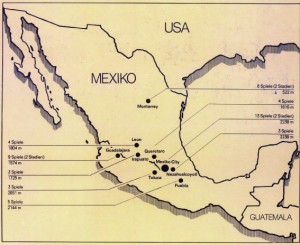
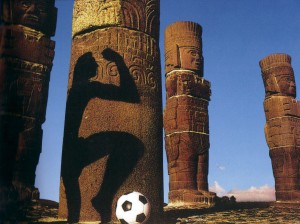
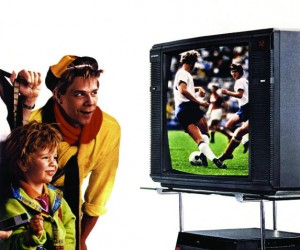
The 13th World Cup was about to begin and perhaps – perhaps! – all earlier problems would be evaporated by excitement.
The format of the finals was changed again – 24 teams was weird number, difficult to structure to begin with – and this time there was no second group round. Instead, the formula was returned to direct elimination after the first stage: 1/8, ¼, ½, and a final. To make 16 teams for the second round the best 4 third-placed teams in the first round qualified to the 1/8 finals. By points or goal-difference, if points were equal. Not the best solution, but there was no best solution for a long time.
